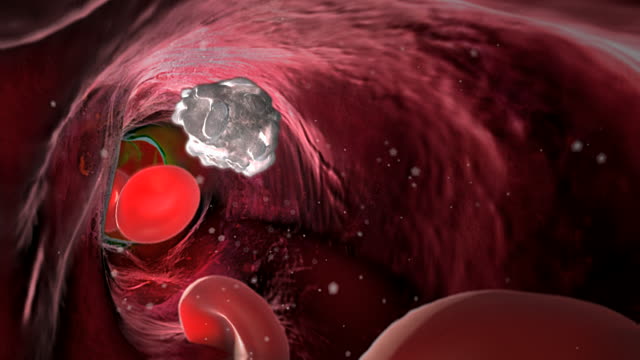Physical forces like blood pressure and the shear stress of flowing blood are important parameters for the tension of blood vessels. Scientists have been looking for a measurement sensor for many years that enables the translation of mechanical stimuli into a molecular response, which then regulates the tension in blood vessels. Scientists from the Max Planck Institute for Heart and Lung Research in Bad Nauheim have now discovered just such a sensor in the inner layer of the blood vessel wall: the molecule in question, known as PIEZO1, is a cation channel and could one day provide a starting point for the treatment of high blood pressure.
Unlike water pipes, which are often used as a model for explaining the functioning of blood vessels, the latter are anything but rigid and lifeless. Instead, they consist of an elastic vessel wall comprising different layers of highly sensitive tissue. This tissue is able to respond to the changing requirements of the body by increasing the vessel diameter and intensifying the blood flow as a result.

(Credit: Getty Images)
The blood vessel receives the information necessary for this process from the blood stream itself: “One of the most important control mechanisms is the physical forces exerted by the blood on the interior of the blood vessels,” says Stefan Offermanns, Director at the Max Planck Institute for Heart and Lung Research in Bad Nauheim. “The blood vessel interior is lined with endothelial cells. These register the intensity of the blood flow using molecular antennae.” In response to this stimulus, the endothelial cells release nitric oxide, among other things. This causes the vessel musculature to relax and the blood vessel expands.
PIEZO1 translates physical stimulus into molecules
In addition to the level of the blood pressure, the mechanical shear forces are the main factor that affects the endothelium via the bloodstream and are crucial for the regulation of blood flow. “Previously, we knew very little about how endothelial cells register the mechanical forces of the flowing blood at molecular level. With PIEZO1, we have now discovered a cation channel that forms the interface that transposes the physical stimulus into a molecular reaction. This, in turn, controls the tension of the blood vessel wall,” explains Shengpeng Wang, first author of the study.
The Max Planck researchers initially observed in cultivated endothelial cells that PIEZO1 triggers a signalling cascade when it is exposed to shear stress: “PIEZO1 is activated by the mechanical stimulus. It causes calcium cations to flow through the channel into the endothelial cells and thereby trigger a chain reaction,” says Wang. This signalling cascade culminates in the release of nitric oxide and the expansion of the blood vessel.
High blood pressure without PIEZO1
The Max Planck researchers were able to confirm what they had observed in the laboratory in the living organism using genetically modified mice. Mice with an inactive PIEZO1 gene had higher blood pressure than the control animals. “Due to the lack of the PIEZO1 molecular sensor, the shear forces were not correctly perceived by the endothelial cells and the entire signalling cascade was scarcely activated at all,” explains Wang. The cells then released less nitric oxide and the blood vessel musculature remained tense. This, in turn, caused permanently raised blood pressure in the animals.
If PIEZO1 proves to be the long-sought sensor with which the endothelial cells register the mechanical forces of the flowing blood column so as to regulate the tension of blood vessels, it could be of therapeutic importance. “We would be able to activate PIEZO1 pharmacologically using a specific active ingredient. The cells would react to it in exactly the same way as they would to shear stress,” says Offermanns. “For this reason, active ingredients that stimulate PIEZO1 could offer a promising option for the treatment of different forms of high blood pressure.” PIEZO1 could also provide the therapeutic starting point in the case of diseases, in which the spasmodic narrowing of the blood vessels plays a role.




